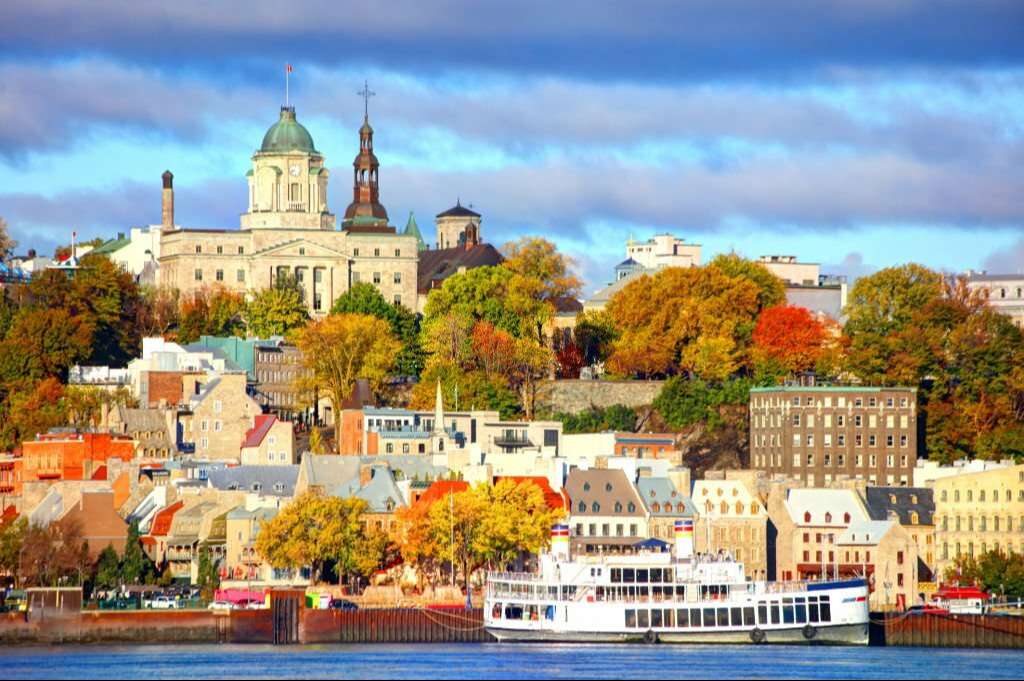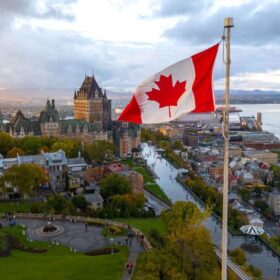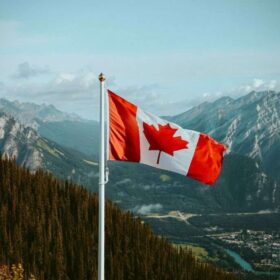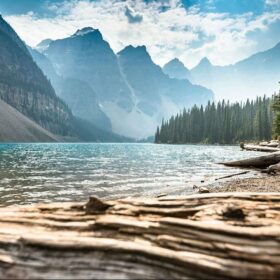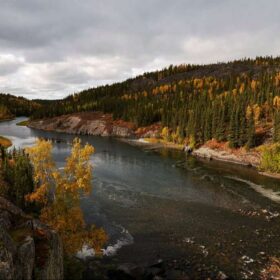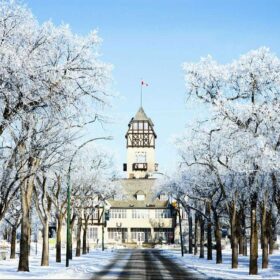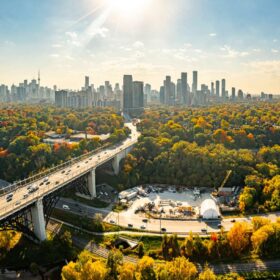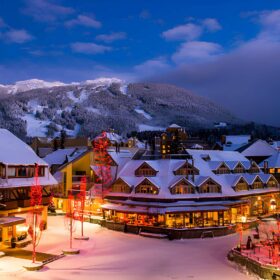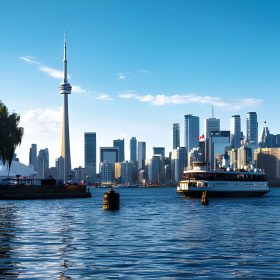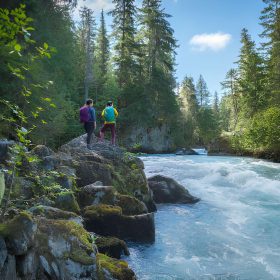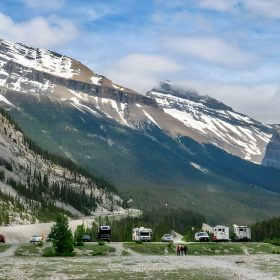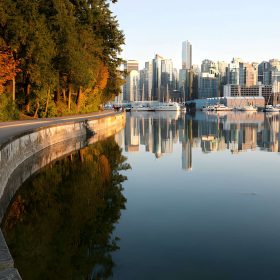Covering a vast expanse that constitutes roughly one-sixth of Canada, Québec offers a diverse range of landscapes, encompassing historic cities to remote Arctic tundra. The province extends nearly to the Arctic Circle in the north and shares its borders with the American states of Vermont and New York in the south, and Hudson Bay in the west. The St. Lawrence River, stretching for almost 1,200 kilometers, meanders through the most densely populated regions of the province.
While most visitors are drawn to the two main cities, Montréal and Québec City, there’s a multitude of activities to explore throughout the province, whether in summer or winter. The province boasts historical sites, cultural institutions, festivals, charming small towns, and stunning parks and natural areas, among other highlights. Discover the finest destinations within the province with our list of the top tourist attractions in Québec.
1. Place Royale
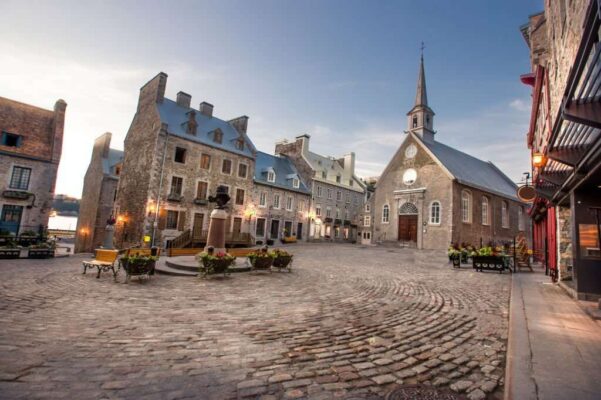
Place Royale stands as the historic birthplace of Québec City, where Samuel de Champlain founded the first settlement in 1608. It houses a remarkable collection of 17th- and 18th-century buildings, providing a glimpse of Old Québec’s charm. The picturesque stone church, Notre-Dame des Victoires, dating back to 1688, graces the square, alongside modern tourist attractions such as an outpost of the Musée de la Civilisation.
Within a few blocks, you’ll discover numerous opportunities for sightseeing in Old Québec City, particularly in the enchanting Quartier Petit-Champlain. Historic buildings line the narrow pedestrian-only streets, offering a plethora of attractions, including artisan boutiques, a diverse array of excellent restaurants, and a captivating trompe-l’oeil mural with a historical theme.
2. Chutes Montmorency
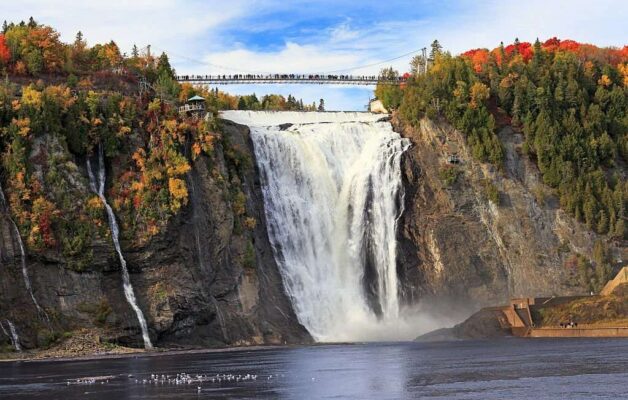
Situated just northeast of Québec City, the expansive Chutes Montmorency forms a dramatic 84-meter waterfall that descends from an escarpment. Surpassing the height of Niagara Falls, a slender pedestrian suspension bridge spans the Montmorency River to Île d’Orléans, providing an opportunity to observe the cascading water rush over the precipice directly beneath your feet.
Additionally, a cable car ride takes visitors to the summit of the falls, offering magnificent views of the surrounding landscape. Montmorency Manor houses an interpretive center and a restaurant for added convenience. The falls can also be admired from various trails, staircases, and observation platforms, while several picnic areas are available. For the more adventurous, there’s the option to experience a thrilling 300-meter zipline ride across the falls or engage in rock climbing on the nearby cliffs.
3. Parc Jean Drapeau
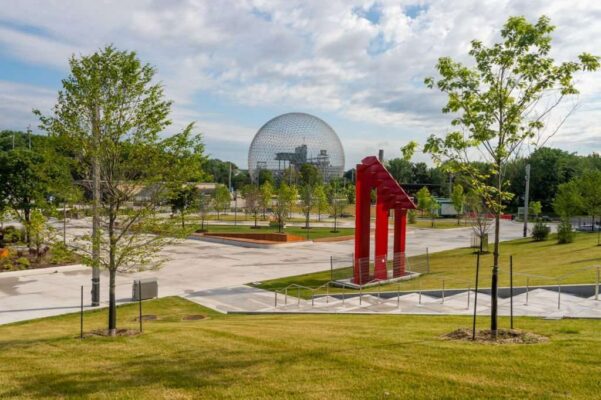
Île Sainte-Hélène, a man-made island that once hosted the 1967 World’s Fair, is now the site of Parc Jean Drapeau and its multitude of family-friendly attractions. Among the top activities for children is a trip to the expansive La Ronde Amusement Park, featuring a diverse selection of rides for kids and thrill-seekers of all ages, along with entertainment and games.
The Montreal Biodome, the world’s largest structure of its kind, operates as a biosphere that highlights green technology and offers exhibits on ecology and environmental concerns. Admission is free for tourists under 18.
For history enthusiasts, a visit to the Stewart Museum is a must. The museum’s permanent collections encompass a wide array of art and artifacts, including household items, military gear and weapons, scientific instruments, and rare books. Additionally, the museum hosts special exhibitions and events throughout the year.
4. Le Château Frontenac
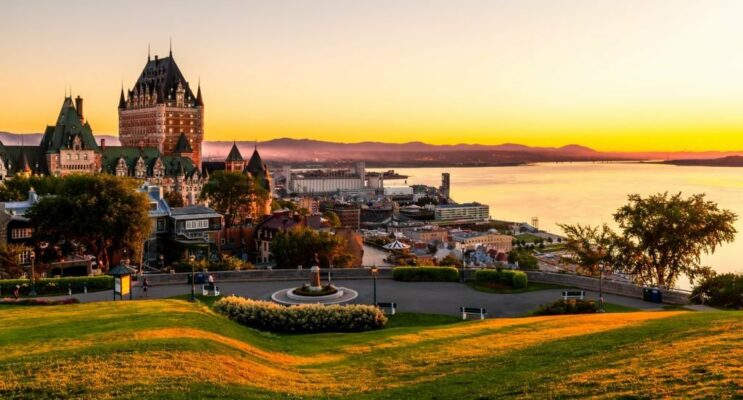
Perched above Québec City, the majestic Château Frontenac stands as the provincial capital’s most iconic structure, visible from miles around. Constructed by the Canadian Pacific Railway in 1894, the hotel continues to extend its warm welcome to guests from all corners of the world, set within one of the most romantically charming settings you can encounter.
This hillside location was once home to Fort St.-Louis, but now, the expansive boardwalk of Terrasse Dufferin offers panoramic vistas to the south, including views of Levis and the St. Lawrence River. Both hotel patrons and visitors can catch a glimpse of the fort’s ruins lying beneath the Promenade des Gouverneurs, a major thoroughfare that leads southward towards the Plains of Abraham and the Citadel.
5. La Citadel de Québec
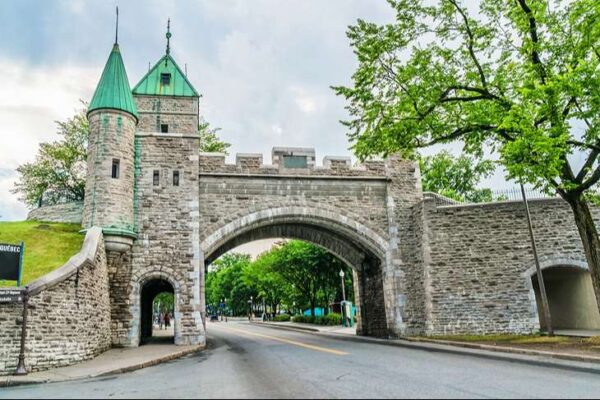
Perched on Cap Diamant and overlooking the St. Lawrence River, the Citadel de Québec, with its star-shaped design, has been standing guard over Québec City since 1832. Its formidable presence is characterized by stout walls and commanding ramparts, all encircled by deep moats. The military museum, located within the fort’s former 18th-century powder magazine, is open year-round, and during the summer months, visitors can enjoy the daily morning Changing of the Guard ceremony.
The Citadel continues to function as an active military installation, providing accommodations for personnel of all ranks and serving as the summer residence of Canada’s Governor General. Additionally, it serves as the headquarters of the prestigious 22nd Canadian Regiment.
6. Old Montréal (Vieux-Montreal)
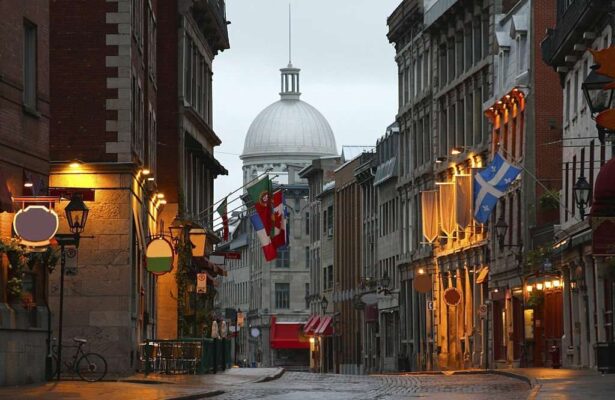
Best explored on foot, Old Montréal is a concentration of buildings dating back to the 17th, 18th, and 19th centuries, situated at the periphery of the city’s Old Port. This historic section of the city hosts numerous top tourist attractions in Montréal, such as the neo-Gothic Notre-Dame Basilica and the pedestrian-friendly square at Place Jacques-Cartier.
Within the Old Port area, there are numerous family-friendly activities to enjoy, including the Montréal Science Center and the Natrel Skating Rink. For couples and families alike, the La Grande Roue de Montréal (Observation Wheel) is a must-visit. This recent addition along the riverfront offers enclosed gondolas, providing breathtaking views of Old Montréal, downtown, and the surrounding areas.
7. Gatineau Park
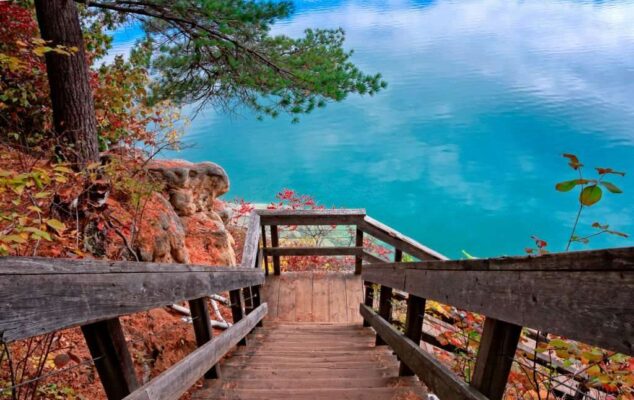
Gatineau Park, a hilly and largely undeveloped woodland with serene lakes, is situated near the city and river sharing the same name. Within the park’s boundaries, you will find the Mackenzie King Estate, the former residence of the unconventional Canadian Prime Minister, William Lyon Mackenzie King. In addition, visitors can explore the marble cavern at Lusk Cave through guided tours.
The Belvédère Champlain (Champlain Lookout) stands out as the park’s most frequented viewpoint, offering picturesque vistas of the river valley and the forested hills, especially breathtaking during the autumn season. The park’s trails are enjoyed by a mix of hikers, cyclists, and dog owners, while facilities for camping, swimming, fishing, and skiing is also available.
8. Forillon National Park
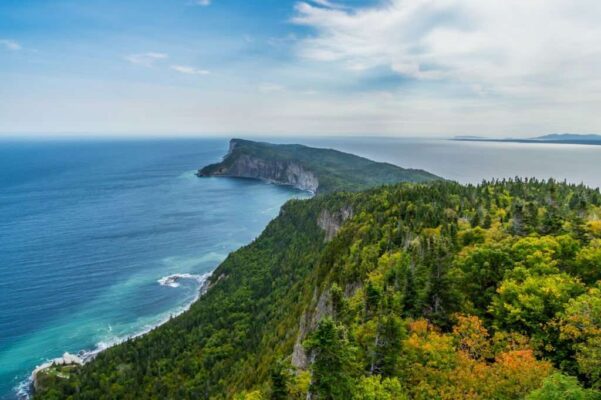
Located at the tip of the Gaspé Peninsula, this untamed and rugged national park juts into the Gulf of St. Lawrence, offering breathtaking natural landscapes. The park boasts dramatic features like limestone cliffs and the remote Cap des Rosiers Lighthouse, which is not only the tallest lighthouse in Canada but also houses an informative center providing insights into the local wildlife.
The Gaspésie region in this area is a haven for bird watchers, and it also offers a variety of whale-watching boat excursions. Adventurous individuals who are willing to hike the trail along Cap Bon-Ami are treated to spectacular views of the cliffs along the cape.
9. Basilica of Sainte-Anne-de-Beaupré
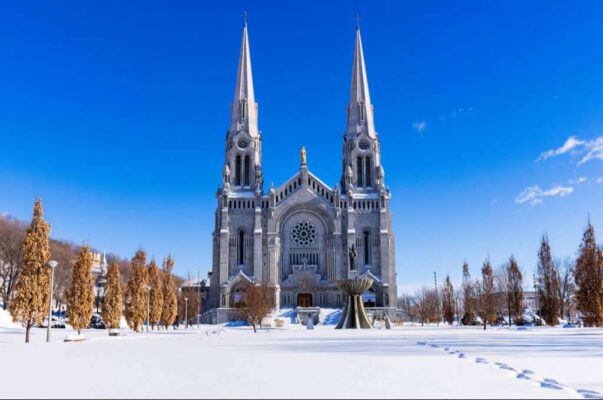
Ste-Anne de Beaupré, a serene riverside town, sees half a million pilgrims annually, drawn to the home of the Basilica of Sainte-Anne-de-Beaupré. Saint Anne, the patron saint of Québec, is attributed to numerous miraculous events, and the entrance of the basilica is adorned with discarded crutches, serving as a testament to the many individuals who have reported experiencing miraculous cures. The present structure was constructed in 1926, but the location has been home to a place of worship dedicated to Saint Anne since the 17th century.
In the same vicinity, just northeast of Québec City, you will encounter river canyons and waterfalls at Chutes Ste-Anne and Sept-Chutes. Visitors can explore the nature trails and admire the gorge from suspension bridges.
10. Canadian Museum of History
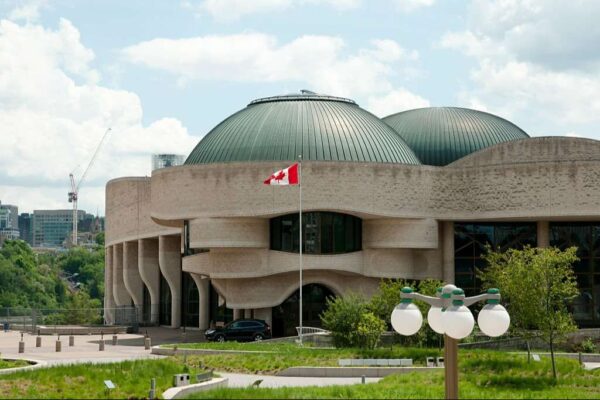
Situated in Gatineau, this contemporary building offers a view across the river to the Parliament Buildings in Ottawa. As the flagship Canadian museum, it delves into the history of Canada, encompassing diverse aspects such as First Nations cultures in the Pacific Northwest and Norse seafarers. Alongside its permanent exhibitions, the museum regularly hosts traveling displays from partner museums.
Families need not worry about keeping the younger ones entertained, as admission to the history museum includes access to the Canadian Children’s Museum. This interactive, play-driven space allows kids to get hands-on and explore a variety of cultures and historical themes. Additionally, the museum features a seven-story IMAX theater that screens a range of films delving into Canadian history and life in the north.
11. Mount Royal Park
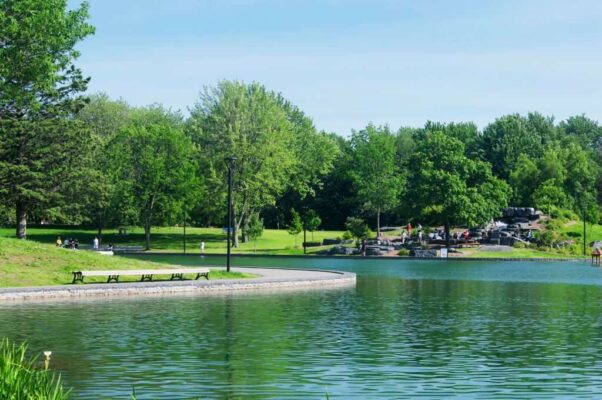
Mont Royal not only lends its name to Montréal but also stands as the central mountain in the city. This 233-meter peak offers an excellent vantage point over Québec’s largest city, particularly from the Kondiaronk Belvedere.
The park hosts a variety of events, from winter ice-skating on Lac-aux-Castors and cross-country skiing to the rhythmic beats of Les Tam-Tams, a summer Sunday gathering near the Sir George-Étienne Cartier monument. From the summit’s viewing platform, visitors can enjoy a panoramic vista over Île de Montréal and the St. Lawrence River. On particularly clear days, it’s even possible to catch a glimpse of the Adirondack peaks in the United States.
12. Hudson Bay
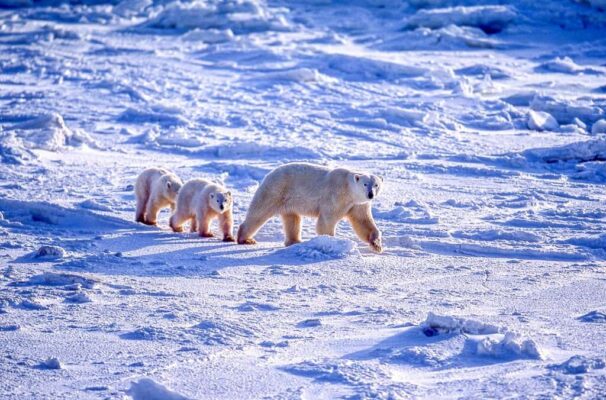
The vast expanse of Hudson Bay represents one of the most remote regions in Canada, encompassing an area of 637,000 square kilometers. Stretching into the Arctic Circle, this rugged terrain is a habitat for rare natural wonders. Within this wilderness, you can encounter more than 800 species of Arctic vegetation, including Arctic lupine, polar poppies, and purple saxifrage. Migratory birds and seals are frequently spotted, with occasional appearances by polar bears.
Hudson Bay itself hosts a thriving fish population, and sightings of Beluga whales are sporadic. The Inuit people have been the enduring inhabitants of this region, and the small outpost communities have withstood the test of time.
13. Mont Tremblant
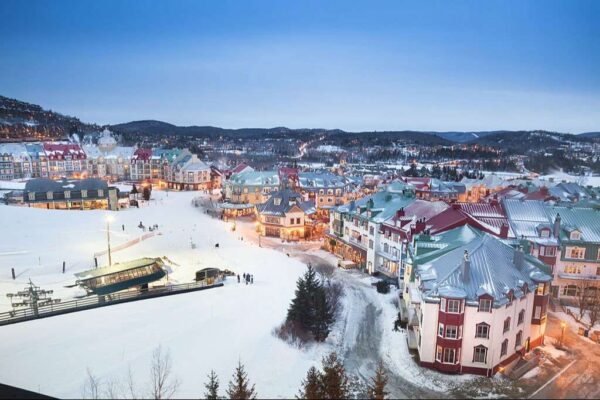
Ski resorts in the Canadian Laurentians are cherished winter getaways, with Mont Tremblant being the premier destination. It claims the title of the highest peak in the Laurentians at 960 meters and is situated approximately 150 kilometers north of Montréal. The resort community is distinguished by its fine dining, entertainment options, and abundant lodging, all set within a charming pedestrian village. This region also serves as a popular fall destination when the leaves transition into beautiful autumn shades of orange, red, and gold.
Another well-liked ski area is Mont Sainte-Anne, conveniently located near Québec City. In addition to offering excellent winter sports conditions, the resort provides a wealth of summer activities, including camping, hiking, mountain biking, and golf.
14. Bonaventure Island
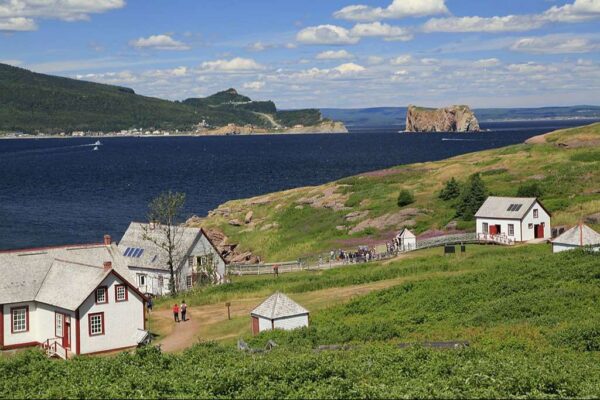
Located off the Gaspé Peninsula in the Gulf of St. Lawrence, this island is renowned as a bird sanctuary where approximately 50,000 gannets congregate during the summer. The island showcases the rugged and picturesque scenery of Gaspésie, characterized by sheer rocky cliffs. A nature trail is available, providing a bird-watching route where visitors can also observe other seabirds, including Atlantic puffins, terns, razorbills, and various species of cormorants.
Within the park, you will also find the much-photographed Rocher Percé (Pierced Rock) alongside other rocky outcrops and magnificent cliffs sculpted by the forces of nature. Positioned along the Percé Coast, this island serves as an excellent summer destination for photographers and nature enthusiasts.
Accommodation: Where to Stay in Québec: Best Areas & Hotels
FAQs
Q: Is Quebec a safe destination for travelers?
A: Quebec is generally a safe destination for travelers, with low crime rates. However, it’s always wise to take standard safety precautions when visiting any place.
Q: What is the best time to visit Quebec?
A: The best time to visit Quebec depends on your preferences. Summer is ideal for outdoor activities, while winter is perfect for winter sports and festivals. Spring and fall offer milder weather and fewer crowds.
Q: Do I need to speak French to visit Quebec?
A: While French is the official language, many people in Quebec, especially in tourist areas, speak English. Learning a few basic French phrases can be helpful, but you can manage with English.
Q: What are the must-try foods in Quebec?
A: Don’t miss trying poutine, tourtière, and maple syrup products like maple taffy. These are quintessential Quebecois dishes.
Q: Are there any hidden gems in Quebec that aren’t widely known?
A: Yes, Quebec has several hidden gems like the Magdalen Islands and Parc national des Îles-de-Boucherville, which offer unique and less crowded experiences for travelers.

